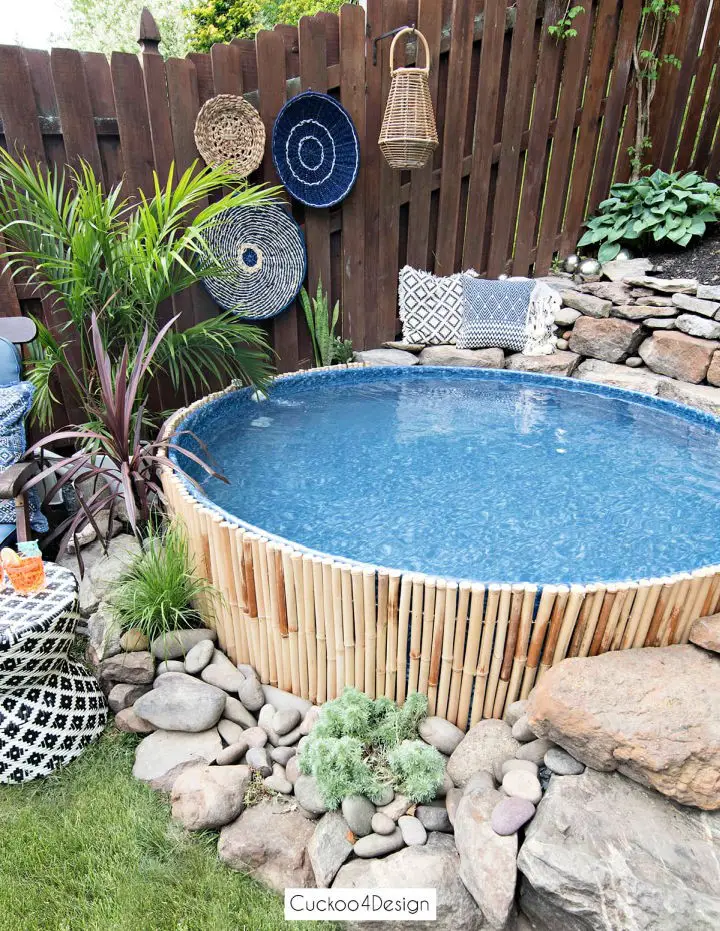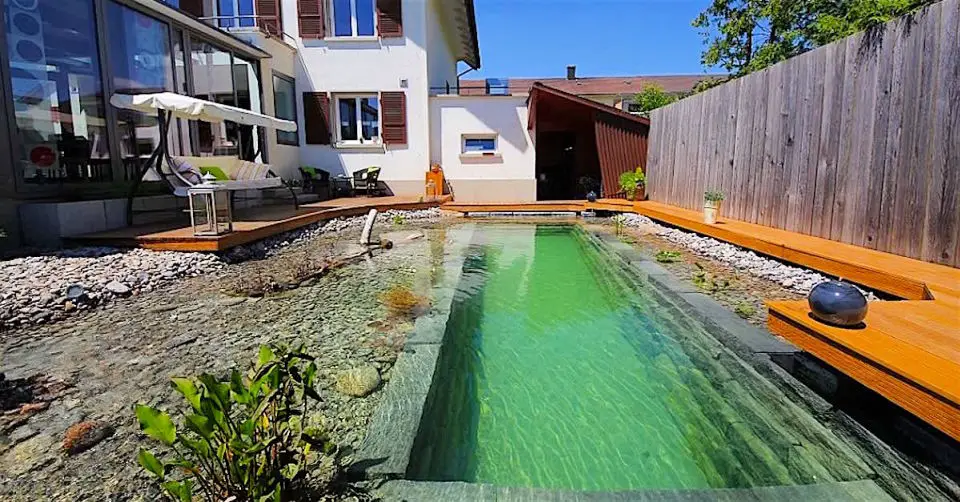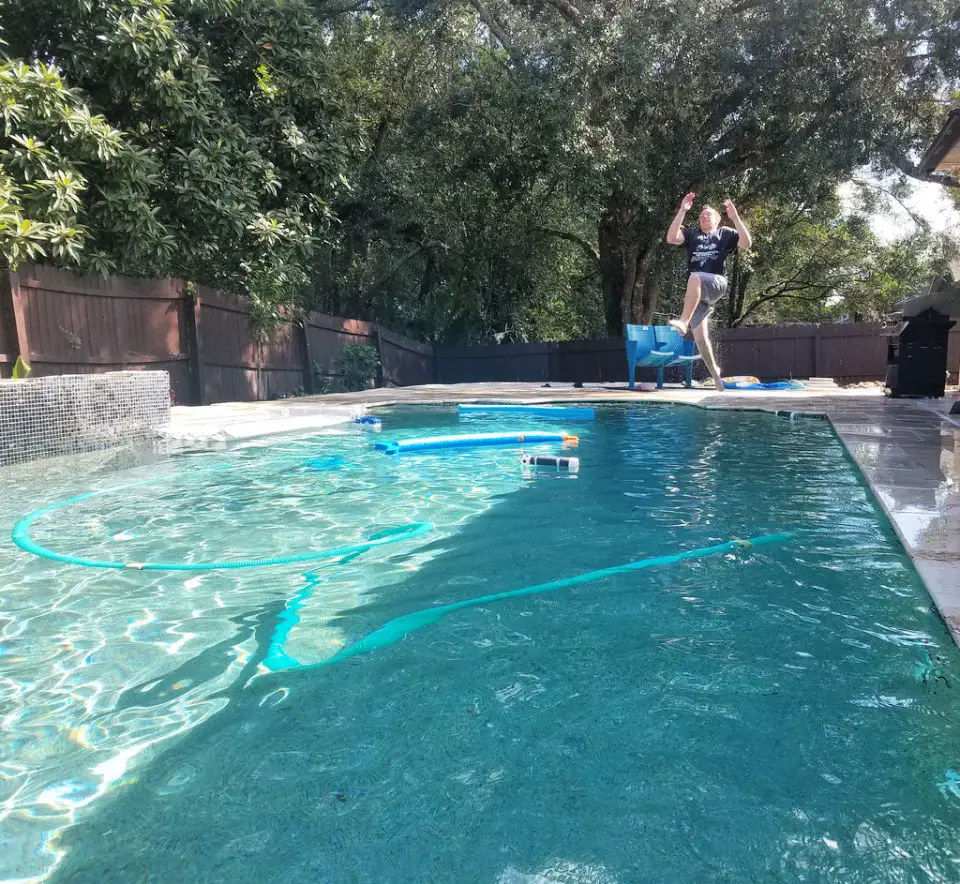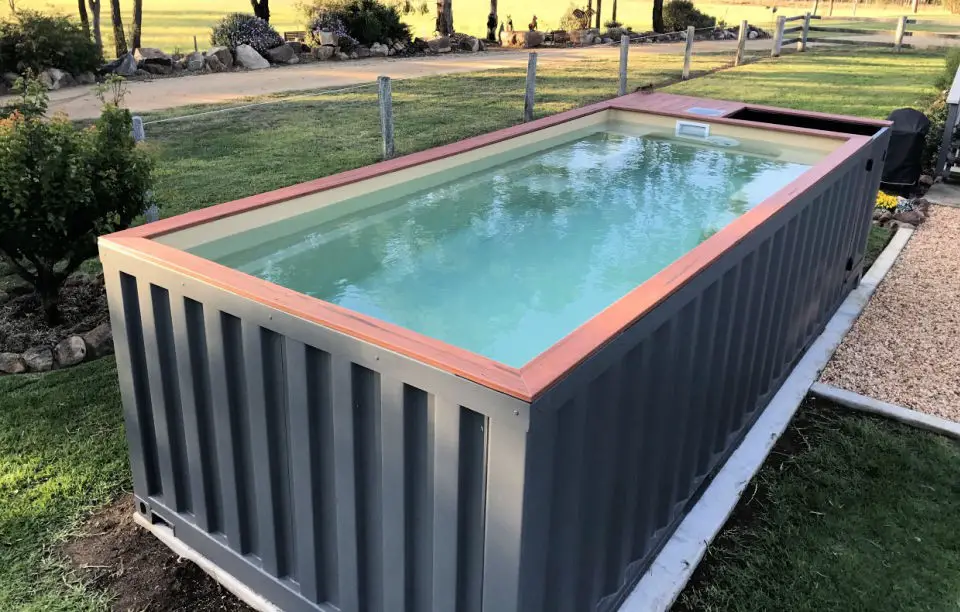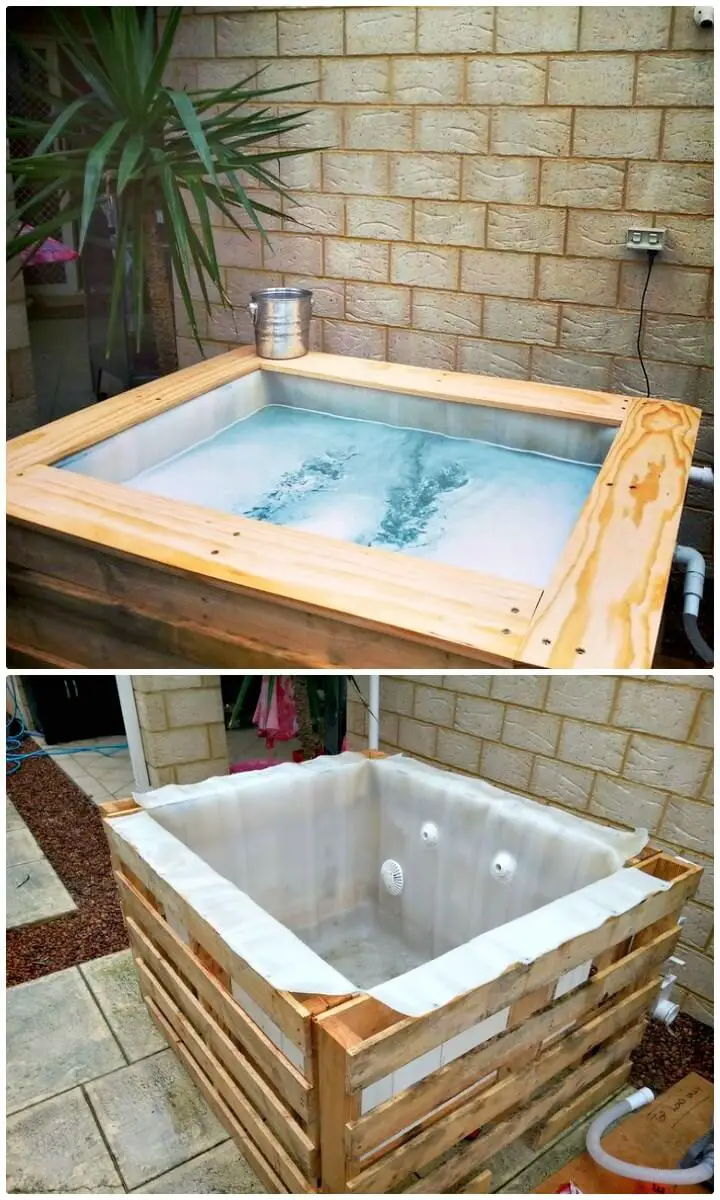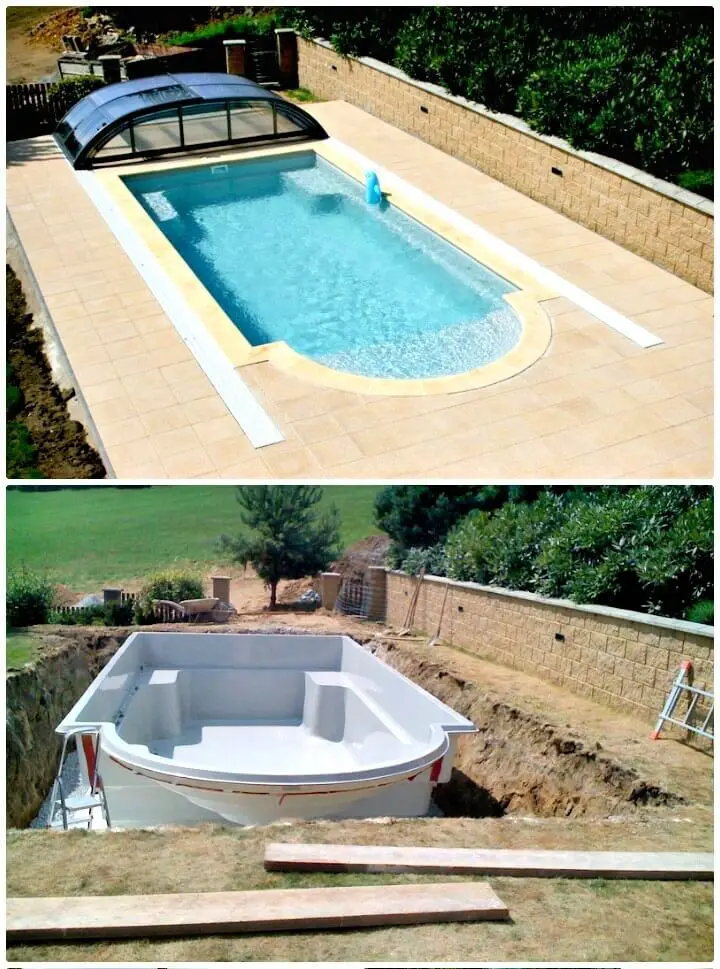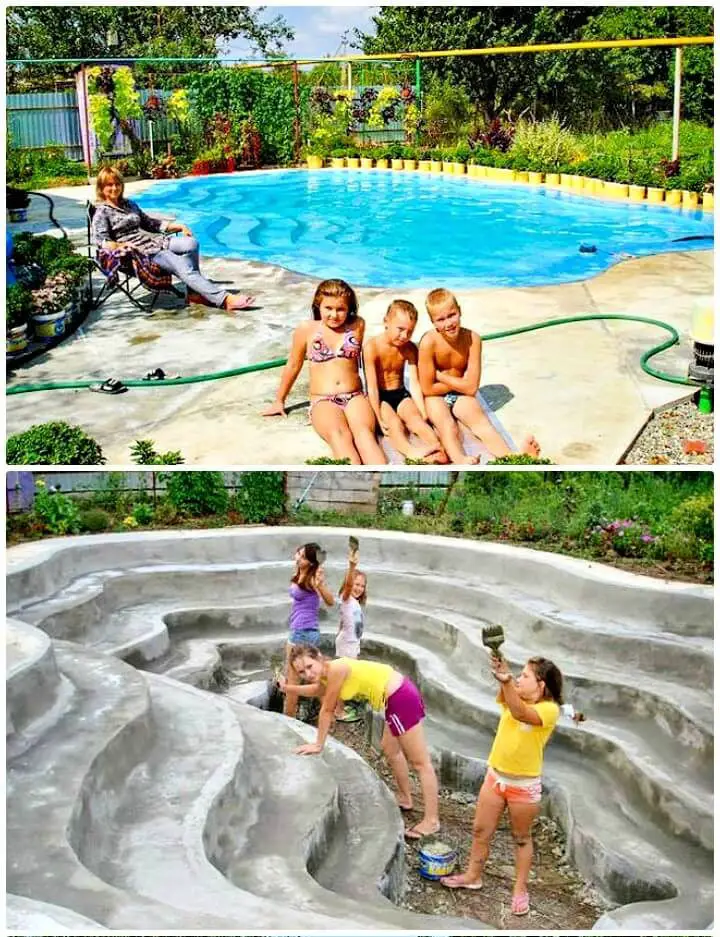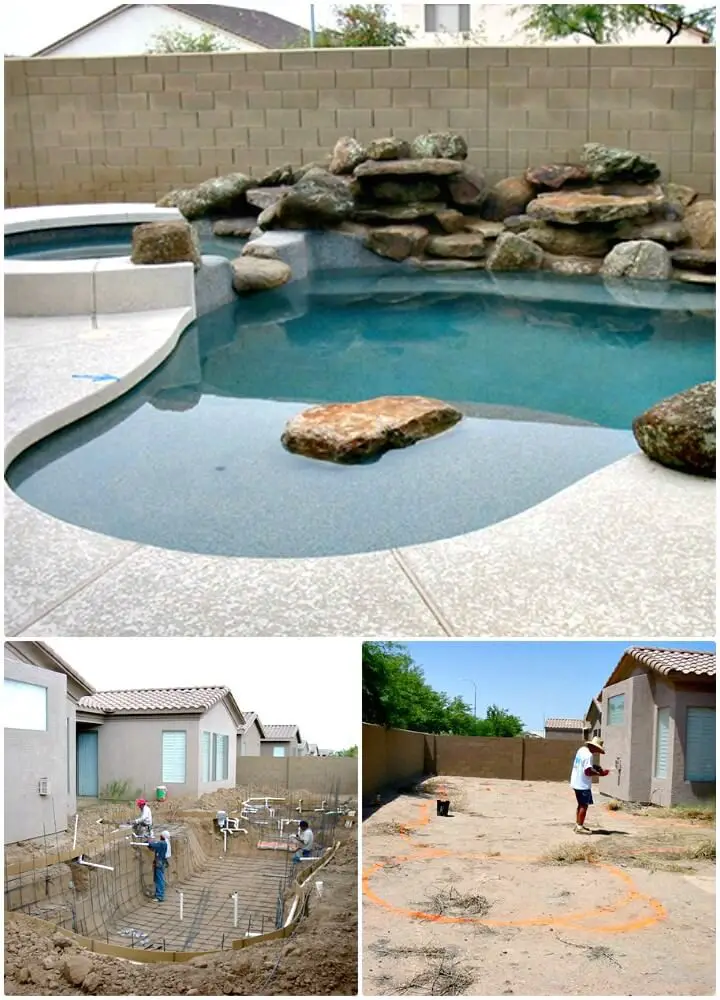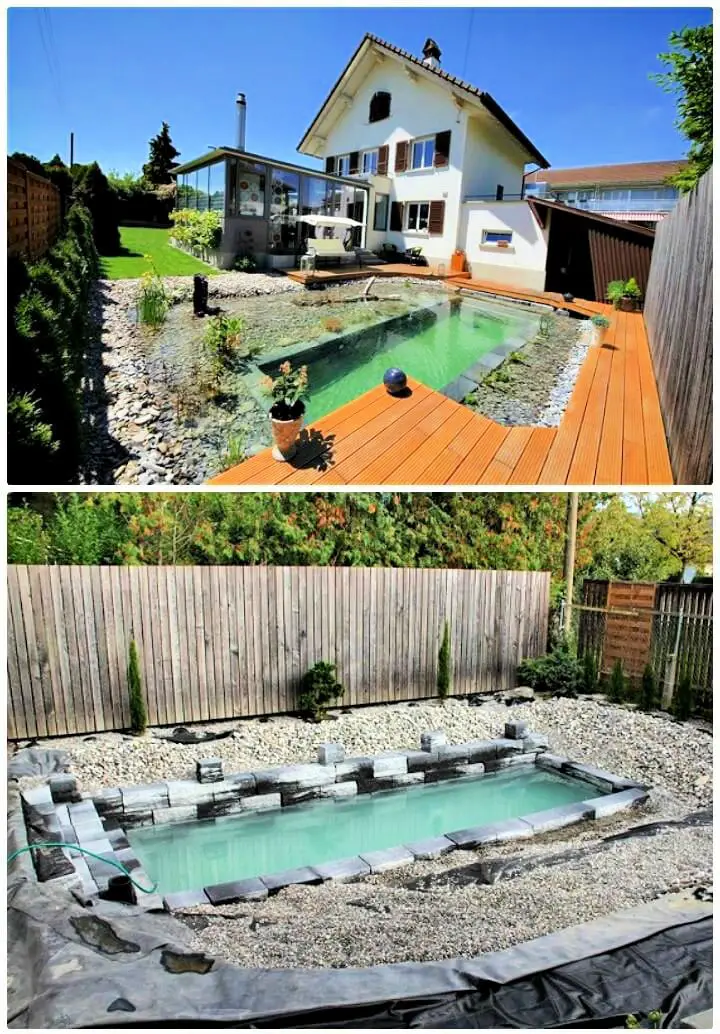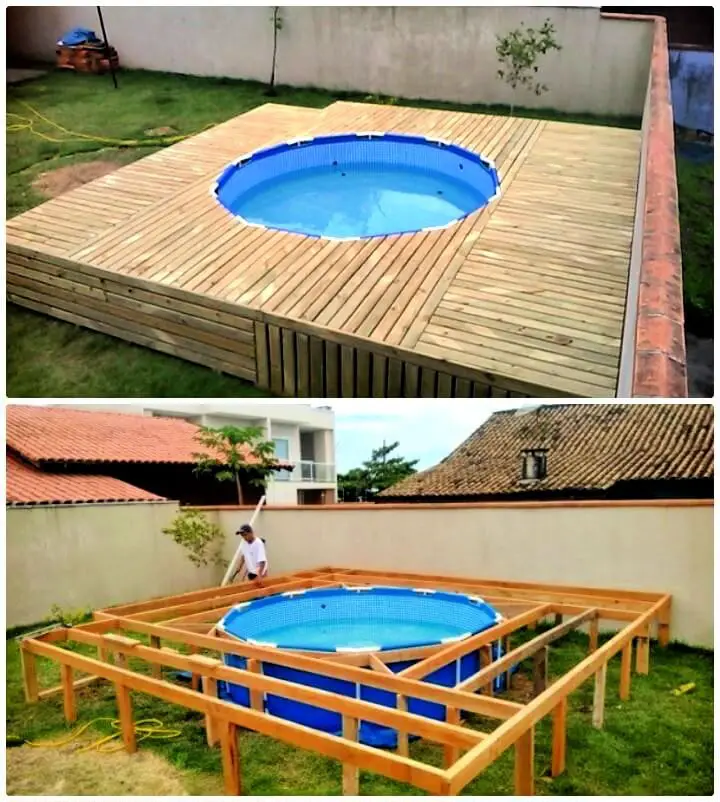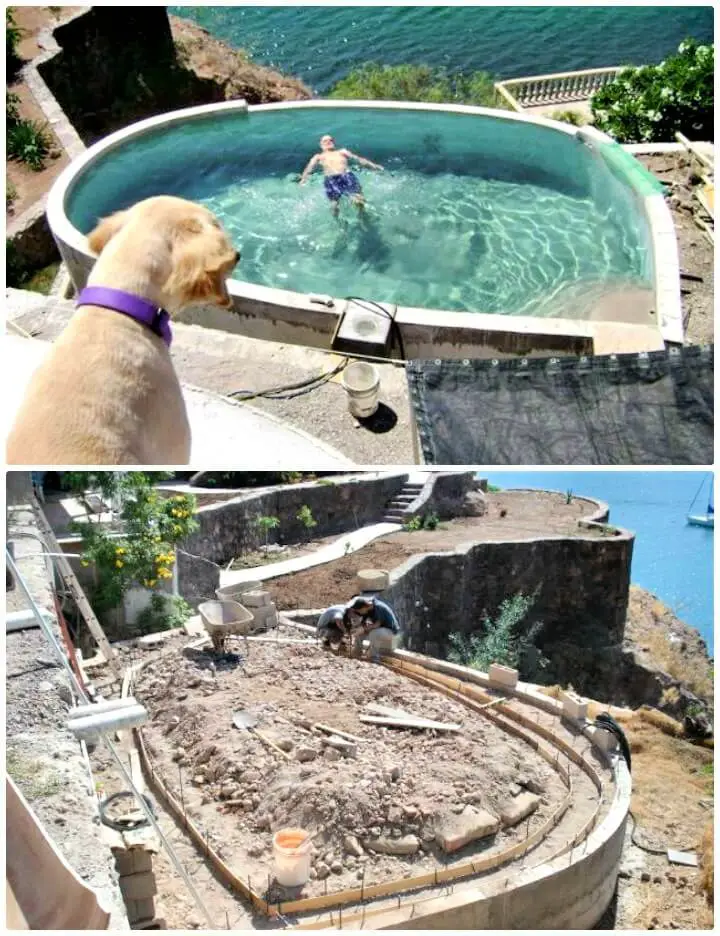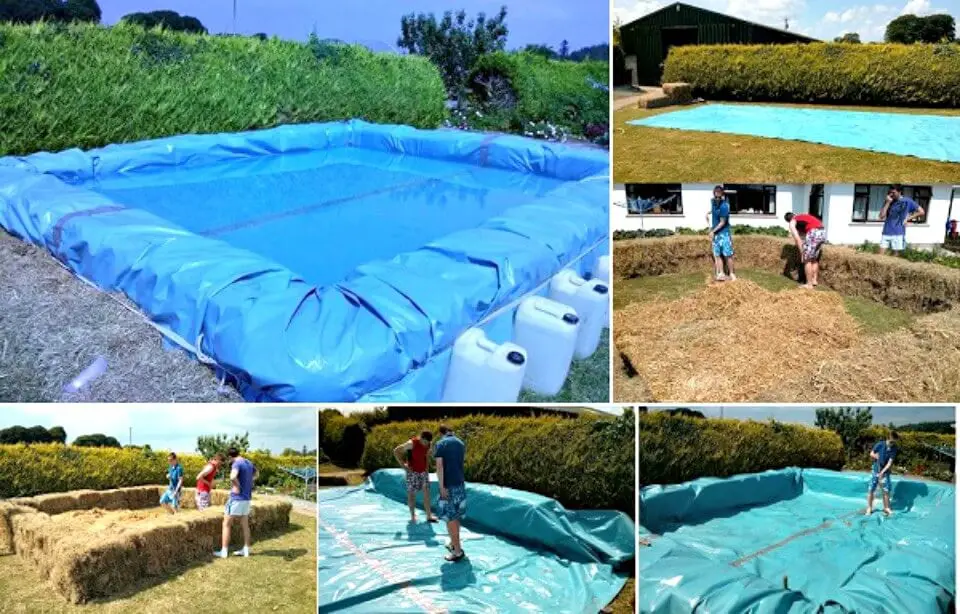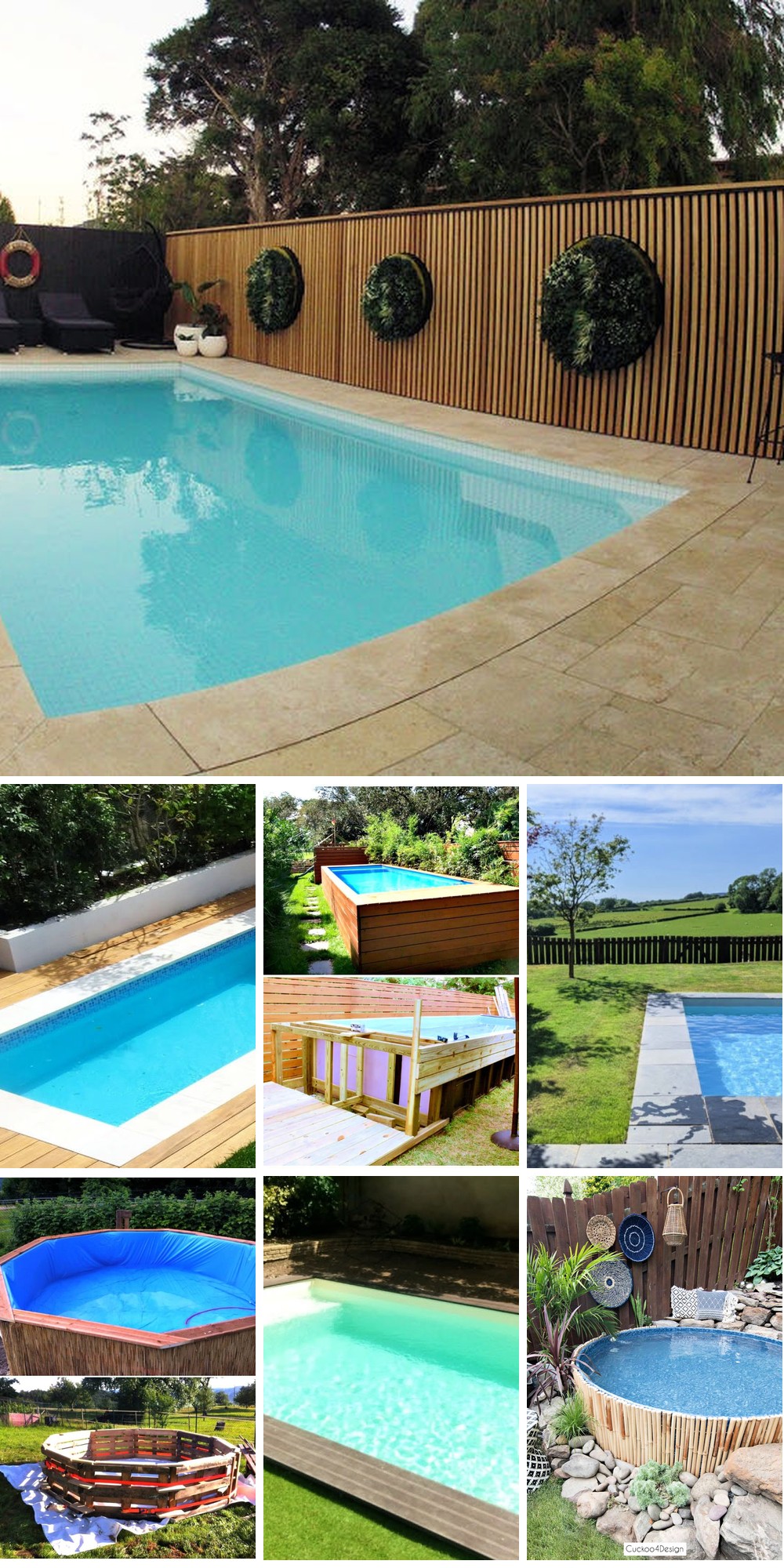
Creating a DIY swimming pool is a fulfilling project that not only provides a refreshing way to beat the heat but also yields a sense of pride and accomplishment. With 25 diverse plans at your disposal, selecting the perfect design for your space, budget, and skill level is easier than ever. This comprehensive guide offers practical advice and step-by-step guidance on building a swimming pool, ensuring you’re equipped with all the necessary information to tackle your project with confidence. As you embark on this DIY adventure, it’s essential to understand the ‘why’ behind building a swimming pool and navigate each stage – from design and planning to excavation, foundation laying, and finishing touches – with ease. Each step is carefully designed to guide you through the process smoothly. If you’ve ever fantasized about having your own pool but were uncertain where to start, this guide will provide the insights needed to turn that dream into reality.
Learn About DIY Swimming Pools
Embracing the thrill of creation, building your own swimming pool is an exciting endeavor that can yield immense satisfaction. By designing a personalized oasis tailored to your unique requirements and available space, you’ll not only enjoy a space that perfectly suits your needs but also relish the sense of pride that comes with completing a substantial home improvement project, one that’s truly yours.
Why Consider a DIY Swimming Pool?
By opting for a DIY swimming pool, you can reap numerous benefits. The most significant advantage is the potential cost savings that come with taking on the labor yourself. This approach enables you to significantly reduce the overall expense compared to hiring professionals. Furthermore, building your own pool grants you complete control over every aspect of its design, allowing you to tailor it to match your unique vision. You’ll have the freedom to decide on the shape and size, materials used, and features incorporated. Additionally, the process of constructing a pool can be a valuable learning experience, providing an opportunity to gain knowledge in areas such as construction, plumbing, and filtration systems. Moreover, building a pool can become a family project, offering a chance for everyone to contribute and work together towards a common goal.
Getting Started with Your DIY Pool
When embarking on the journey of building a DIY pool, it’s essential to lay a strong foundation by thoroughly researching different types of pools and their requirements. This involves considering various factors such as the local climate, soil type, and available yard space. Next, sketch out a comprehensive design for your pool, taking into account depth, length, and any additional features you may want, like steps, diving boards, or slides. Before breaking ground, be sure to check with local authorities regarding permits and regulations, ensuring that you meet all necessary safety standards and building codes. Additionally, create a detailed budget that accounts for materials, tools, and any extra costs associated with hooking up water or electricity supplies. Finally, establish a realistic timeline for your project, factoring in the time required for each stage of construction to avoid delays and costly mistakes. By prioritizing planning and consulting experts when needed, you’ll be well on your way to creating a personalized oasis that’s perfect for family fun.
Planning Your Pool
To embark on a DIY swimming pool project, it’s crucial to approach the endeavor with meticulous planning, as this will directly impact the outcome’s quality and overall satisfaction. A well-structured plan is essential for streamlining the process, minimizing potential setbacks, and achieving a stunning final product.
Understanding Your Space
When planning to install a pool in your backyard, it’s essential to take stock of the available space. Measure out the area to determine the maximum size your pool can be. Consider the landscape, slope, and soil type, as these factors will significantly impact the construction process. For instance, a sloping yard may require specialized installation methods or additional structural support. Similarly, soil composition can affect the foundation’s stability and drainage. By taking these factors into account, you’ll be able to design a pool that seamlessly integrates with your outdoor space.In addition to considering the physical environment, it’s also important to think about the natural light in your yard. Observe how sunlight and shade patterns change throughout the day. A well-placed pool can harness the sun’s energy, reducing the need for artificial heating systems and saving you money on your utility bills. By understanding how sunlight interacts with your backyard, you’ll be able to create a pool that not only looks great but also functions efficiently.
Designing Your Dream Pool
As you embark on designing your pool, take a moment to envision its final form. Enthrall yourself in the thought of how you want it to look – a sleek rectangle or a more organic free-form shape? Unleash your creativity by sketching out your ideas or utilizing online tools to bring your vision to life. This mental exercise will serve as the foundation for your pool’s design, setting the tone for what’s to come.
Next, consider the features and accessories that will elevate your pool experience. Do you desire a shallow end for young ones to frolic in? Or perhaps underwater lighting to create an otherworldly ambiance? Maybe even a diving board to add a touch of thrill? Each feature will have a ripple effect on the project’s complexity and cost, so it’s essential to weigh these factors as you move forward.
Budgeting and Resources
When planning a DIY project, it’s essential to establish a realistic budget from the outset. This involves considering all the costs involved, including the expense of materials, any equipment rentals, and potential professional consultations. By setting a clear financial target, you’ll be better equipped to make informed decisions throughout the project.To ensure your budget is accurate and comprehensive, take the time to identify the tools and resources you’ll need to bring your vision to life. This may involve procuring construction materials, plumbing supplies, or even renting specialized machinery for excavation tasks. By having a clear understanding of what’s required, you can avoid costly mistakes and stay on track with your financial goals.
Legal and Safety Considerations
Before constructing a pool, it’s essential to ensure compliance with local regulations and permits. Research the specific building codes governing your area to avoid any potential issues or fines. Furthermore, prioritize safety measures from the outset by incorporating barriers, pool covers, and anti-slip surfaces into your design. By doing so, you’ll be able to enjoy a worry-free swimming experience while also minimizing the risk of accidents.
Timeline and Project Management
When embarking on a DIY pool project, it’s crucial to establish a solid timeline to guide the process. Divide the project into manageable stages and set realistic deadlines for each phase. This approach helps you stay focused and motivated throughout the build. Additionally, anticipate potential challenges that may arise, such as inclement weather or material shortages. Having a contingency plan in place can help minimize disruptions and keep your project on track. By taking the time to plan carefully, you’ll not only ensure a successful completion but also set yourself up for years of enjoyable use from your new pool.
Choosing the Right Materials for Your DIY Swimming Pool
When embarking on a DIY swimming pool project, it’s essential to choose the right materials to ensure a safe and long-lasting experience for everyone involved. To achieve this, you’ll need to consider several key factors. By understanding what makes a material suitable for your pool, you’ll be well on your way to creating a haven that’s both enjoyable and secure.
Durability and Quality
When it comes to building a permanent pool, three popular materials come into play: concrete, fiberglass, and vinyl. Concrete is renowned for its exceptional durability and flexibility, allowing for a wide range of shapes and sizes. Its strength is unmatched, making it an ideal choice for those seeking a long-lasting and reliable swimming pool. While the upfront investment may be substantial, the benefits far outweigh the costs. For instance, concrete pools can withstand the test of time, requiring minimal maintenance and repairs over the years.Fiberglass, on the other hand, takes the cake when it comes to ease of maintenance. These pre-fabricated pools are designed for quick installation and offer a smooth surface that inhibits algae growth. This low-maintenance approach is a major drawcard for those seeking a hassle-free pool experience.Last but not least, vinyl is an affordable option for those on a budget. While it may lack the durability of concrete or fiberglass, vinyl pools provide a cost-effective solution for a quick and easy installation. Although it may require more maintenance than its counterparts, vinyl is still a viable option for those looking to dip their toes into the world of swimming pool ownership.
Aesthetics and Personal Preference
When it comes to choosing a material for your outdoor furniture, there are several options to consider. For those who prioritize aesthetics and eco-friendliness, stainless steel is an excellent choice. This option provides a modern look that’s sure to impress, while also being 100% recyclable. On the other hand, wood can bring a natural aesthetic to your backyard, blending seamlessly with the environment. While it may require regular maintenance to preserve its appearance and resist water damage, this option can be treated to withstand the elements. Ultimately, stainless steel and wood offer unique benefits that cater to different tastes and needs.
Maintenance and Longevity
When it comes to maintaining a pool, two key factors to consider are ease of cleaning and longevity. Fiberglass pools boast a non-porous surface that makes cleaning a breeze, as well as natural resistance to algae growth. In contrast, concrete pools require more elbow grease to keep them looking their best. Additionally, when weighing the pros and cons of different materials, it’s essential to think about the life span of each option. Concrete pools can stand the test of time if properly maintained, potentially lasting decades. On the other hand, vinyl liners typically have a shorter lifespan, needing replacement every 5 to 9 years.
Environmental Considerations
Not only does stainless steel boast impressive durability, it also offers an eco-friendly alternative to traditional materials. For those prioritizing sustainability, there are options with a reduced environmental footprint throughout their lifecycle. This consideration becomes increasingly important in today’s pursuit of environmentally responsible practices.
Cost Analysis
When it comes to budgeting for a vinyl, concrete, or fiberglass pool, it’s essential to consider both the initial cost and the long-term expenses. Vinyl pools may have a lower upfront price tag, but they can be more costly in the end due to liner replacements that are necessary over time. In contrast, concrete and fiberglass pools often have higher initial costs, yet their maintenance expenses tend to be lower in the long run. As you plan for your pool’s construction, prioritize selecting materials that balance durability, maintenance, aesthetics, and cost to ensure a lasting experience.
How to Build a Swimming Pool – Step by Step
With the right guidance, building a DIY swimming pool can become an exciting and achievable project. This comprehensive guide is designed to lead you through each step of the process with clarity and ease. By following this straightforward approach, you’ll be able to successfully construct your own swimming pool, adding a fantastic feature to your home that will provide endless hours of relaxation and enjoyment.
Step 1: Design and Planning
When planning a pool installation, the first step is to identify a suitable location. Ideally, this should be an area with level ground that receives ample sunlight. The size and shape of the pool should also be carefully considered, taking into account the available space, personal preferences and budget constraints. It’s essential to plan thoroughly, as this will impact the quantity of materials required and the overall aesthetic appeal of the final installation.
Step 2: Gathering Materials
To get started with your design, it’s essential to gather all the necessary materials. A list of commonly needed items includes concrete, waterproofing paint, steel bars for reinforcement, plumbing supplies for filtration, and tiles or a liner for the interior. You’ll also need to have various tools at your disposal, such as shovels for digging, mixers for efficiently mixing concrete, and trowels for smoothing out surfaces. Having these materials and tools ready will ensure a smooth and successful construction process.
Step 3: Excavation
To initiate the excavation process, utilize shovels or machinery based on the size of your pool, meticulously following the dimensions outlined in your design plan. It’s essential to ensure the sides are perfectly even and the bottom is precisely levelled, as this step sets the foundation for a structurally sound pool. While physically demanding, this phase is crucial for achieving a stable and secure swimming environment.
Step 4: Laying the Foundations
Laying the groundwork for a successful pool installation begins with pouring a solid foundation of concrete. This initial step ensures a level and sturdy base, providing a reliable anchor for the rest of the structure. To further fortify this foundation, incorporating steel reinforcement bars into the concrete mix is crucial. This added layer of strength not only enhances the overall durability but also prioritizes safety, providing a secure and worry-free environment for pool users.
Step 5: Building the Walls
To build the walls, you can employ two approaches: constructing them using concrete blocks or pouring concrete into wooden forms. Regardless of the method chosen, it is essential that the walls are strong and well-reinforced to effectively withstand the pressure exerted by the water. Once the concrete has had sufficient time to cure, apply a layer of waterproofing paint to prevent any potential leaks from occurring.
Step 6: Installing Plumbing
When it comes to completing the interior of your pool, don’t forget to prioritize the installation of essential plumbing components for both filtration and water circulation. This critical step ensures the maintenance of crystal-clear and healthy-looking water within your pool’s confines.
Step 7: Finishing Touches
To enhance the aesthetic appeal and functionality of your pool’s interior, consider applying tiles or a liner to create a seamless and visually appealing surface. Ensure a watertight seal by filling any gaps or seams with a high-quality waterproof sealant. Finally, install coping around the perimeter to not only provide a clean finish but also promote safety and prevent accidental slipping or tripping.
Step 8: Filling the Pool
When preparing to fill your pool, it’s crucial to double-check that all plumbing connections are properly secured. As you begin the filling process, keep a close eye out for any signs of leaks or malfunctions. Once the pool is full, activate your filtration system to guarantee optimal water quality from the very start, setting the stage for a safe and enjoyable swimming experience.
Step 9: Landscaping and Accessories
As the final touch to your newly installed pool, it’s essential to focus on landscaping and accessorizing the surrounding area to create an inviting oasis. Think about incorporating a deck or patio furniture to provide ample seating and relaxation space. Additionally, consider adding soft lighting to set the mood and make your poolside retreat truly irresistible.
Enjoy Your Pool
As you gaze upon the sparkling waters of your newly constructed DIY swimming pool, it’s hard not to feel a sense of accomplishment and excitement. The fruits of your labor are now ready to provide hours of fun and relaxation for you and your loved ones. To ensure this oasis remains a treasured part of your daily routine, proper care and maintenance will be crucial in the years to come.
Video Tutorial
While watching a step-by-step video tutorial on building a DIY swimming pool can provide valuable visual guidance, it’s equally important to pair this with a comprehensive written guide that breaks down complex procedures into manageable and easily digestible steps. By combining these two formats, you’ll gain a deeper understanding of each stage in this rewarding DIY project, making the overall process less intimidating and more achievable. As building a swimming pool is a substantial undertaking that demands patience, effort, and attention to detail, it’s crucial to consult with professionals for tailored advice relevant to your unique situation.
Pool Maintenance Tips
To ensure a clean, safe, and enjoyable swimming experience, regular maintenance is crucial for your DIY pool. A well-maintained pool not only prolongs its lifespan but also eliminates the risk of contamination and health issues. To achieve this, consider the following steps: Firstly, inspect the pool’s surface and surroundings regularly to identify any debris or algae growth. Next, test the water quality by checking pH levels, chlorine concentration, and other vital parameters. This information will guide your decision-making process regarding chemical additions, cleaning, and potential repairs.
Regular Cleaning
To maintain optimal pool conditions, two crucial steps are necessary: Skim and Scrub. Daily skimming removes leaves and debris from the water surface, while weekly scrubbing prevents algae buildup by keeping the walls and floor clean. Additionally, regular vacuuming is vital for cleaning the pool’s bottom. Aim to perform this task at least once a week to keep your pool sparkling and safe.
Water Chemistry
In order to promote a healthy environment for your aquatic plants, it’s crucial to regulate the pH level within a narrow range of 7.2 to 7.8. To achieve this, regularly test the water and make adjustments as needed using chemicals to maintain equilibrium. Moreover, sanitizing the water is equally important, as it helps eliminate harmful bacteria and pathogens. To sanitize effectively, you’ll need to introduce chlorine or bromine into the water and ensure that the levels remain consistent to prevent any potential threats.
Filter Maintenance
To maintain optimal performance and longevity, it’s essential to perform regular checks on your filter and adhere to the manufacturer’s guidelines for cleaning and replacement.
A key aspect of effective maintenance is inspecting your filter regularly. This allows you to catch any issues early on and take corrective action before they escalate into more serious problems.
Another crucial step is replacing the filter at the recommended interval or as needed, depending on its type. By doing so, you’ll be able to prevent damage from buildup and ensure a consistent flow of air.
Safety Measures
To ensure a worry-free experience around the swimming pool, prioritizing safety is crucial. Several precautions can be taken to minimize risks and prevent accidents from occurring. Firstly,
Barriers
To ensure pool safety, consider implementing two crucial measures: installing a sturdy fence and utilizing pool covers. A minimum height of 4 feet for the fence is recommended, accompanied by a self-closing and self-latching gate to prevent unauthorized access. Additionally, pool covers can help prevent accidental falls into the water when the pool is not in use, thereby minimizing the risk of injury or tragedy.
Alarms
To ensure a safe and secure pool experience, it’s crucial to implement various alarm systems around the perimeter of your pool area. Start by installing entry alarms on gates and doors leading into the pool zone. These will alert you whenever someone enters the designated pool area, giving you peace of mind that unauthorized access is being monitored. Additionally, consider investing in in-pool alarms that are designed to detect unexpected movement within the water. If an individual unexpectedly enters or interacts with the water, these alarms will sound, prompting a swift response and minimizing any potential risks.
Rules and Education
To maintain a safe and enjoyable environment, clear signage will be prominently displayed to outline essential pool rules. These include crucial reminders such as ‘No Diving’ in shallow areas to prevent accidental injuries and ‘No Running’ around the pool perimeter to minimize the risk of collisions or slips. Furthermore, we strongly recommend that individuals who are not yet proficient swimmers take advantage of our swimming lessons program. This will not only empower them with the skills necessary to navigate the pool safely but also foster a sense of confidence and independence in the water. As an added precaution, all users will be expected to demonstrate a basic understanding of swimming techniques prior to entering the pool.
Legal Considerations
In the world of DIY swimming pools, it’s crucial to consider the legal framework surrounding their construction and maintenance. Specifically, homeowners must ensure that their pool complies with local laws and regulations, which can vary significantly depending on your location.
Permits
Before embarking on a swimming pool construction project, it’s crucial to secure the necessary building permits. This ensures compliance with local regulations and prevents potential fines or penalties. Additionally, have your pool thoroughly inspected by authorized authorities to guarantee its conformity with all applicable safety codes. A meticulous approach to these initial steps will lay a strong foundation for a successful and enjoyable swimming experience.
Regulations
When building or installing a pool, it’s crucial to prioritize compliance with local regulations. Zoning laws dictate the maximum pool size, permissible location, and specific fencing requirements. Ignoring these standards can result in costly modifications down the line. Furthermore, as a pool owner, you must acknowledge the inherent liability that comes with this type of installation. To mitigate potential risks, it’s highly recommended to acquire suitable insurance coverage. This proactive approach will provide peace of mind while minimizing financial exposure should an unexpected incident occur.
Health Codes
To maintain a healthy and enjoyable swimming experience, it’s crucial to adhere to health department regulations for pool water sanitation. This will help prevent the spread of diseases and create a safe environment for all pool users.
By incorporating these maintenance tips, safety measures, and legal considerations into your DIY swimming pool setup, you can confidently ensure that your outdoor oasis is not only a haven for relaxation but also a compliant addition to your home.
Eco-Friendly Options for Your DIY Swimming Pool
When embarking on a DIY swimming pool project, it’s crucial to incorporate eco-friendly options that benefit the environment and your wallet in the long run. By doing so, you’ll not only reduce your environmental footprint but also enjoy cost savings. To get started, consider the following sustainable choices:
Solar Heating Systems
Harnessing the limitless energy of the sun, solar heating systems offer a sustainable solution for warming pool water. By leveraging this renewable resource, homeowners can significantly reduce their reliance on conventional heating methods, resulting in cost savings and a diminished environmental impact.
Natural Filtration Systems
Natural filtration methods, which often incorporate elements like plants and sand, provide a chemical-free solution to purifying pool water. By incorporating these systems into your pool’s design, you can not only improve the quality of the water but also enhance the surrounding landscape.
LED Lighting
LED pool lights offer a winning combination of energy efficiency and longevity, outshining their traditional counterparts in both respects. Their versatile color palette allows for a customizable ambiance that not only saves power but also elevates the visual appeal of your pool area.
Rainwater Harvesting
Conserving water by collecting rainwater to fill your pool is a clever strategy. To achieve this, you can set up a rainwater harvesting system that captures precipitation from your rooftop and stores it for subsequent use in your pool. This innovative approach not only reduces your reliance on municipal water supplies but also helps minimize the environmental impact of your swimming routine.
Eco-Friendly Building Materials
As you plan your pool construction, think about incorporating environmentally responsible elements into your design. One such option is to use recycled or sustainable materials for the pool’s lining. A prime example of this is recycled glass tiles, which not only offer a visually appealing solution but also contribute to a more eco-friendly pool experience.
Common Pitfalls to Avoid in DIY Swimming Pool Projects
While building a DIY swimming pool can be a fulfilling experience, it’s crucial to recognize potential obstacles that may compromise your project’s success or impact the overall quality of your pool. With proper awareness and planning, you can mitigate these issues and enjoy a stress-free construction process.
Inadequate Planning
It’s a trite saying, but one that rings true – failing to plan is indeed planning to fail. When it comes to pool construction, having a comprehensive plan in place can make all the difference between a successful project and a catastrophic outcome. Before breaking ground, take the time to meticulously outline every step of the process, from conceptual design to material sourcing to compliance with local regulations. This proactive approach will help prevent costly mistakes, ensure timely completion, and guarantee a stress-free experience for all involved.
Poor Budget Management
When it comes to embarking on a new project, it’s easy to overlook the importance of budgeting accurately. Failing to account for the true cost of materials and labor can lead to unexpected financial strain. To mitigate this risk, it’s essential to create a comprehensive budget that takes into consideration not only the initial costs but also potential expenses that may arise unexpectedly. By building in a contingency fund, you’ll be better equipped to handle any unexpected setbacks or surprises that come your way.
Ignoring Safety Regulations
When it comes to designing a pool, prioritizing safety is crucial. This involves ensuring that the design adheres to all relevant local safety codes and regulations, thereby minimizing the risk of accidents occurring. It’s essential to strike a balance between creating an enjoyable outdoor space and implementing measures to prevent harm.
Skimping on Materials
It’s essential to recognize that using inferior materials can ultimately result in costly and time-consuming structural problems with your pool. To avoid such headaches, prioritize investing in top-notch materials that guarantee the long-term integrity and durability of your pool, allowing you to enjoy it for years to come.
Overlooking Maintenance
When designing your pool, it’s essential to think ahead and consider the long-term maintenance requirements. Opting for low-maintenance solutions can significantly reduce time and financial burdens down the line. Moreover, being aware of common pitfalls and incorporating eco-friendly options will enable you to create a sustainable and enjoyable swimming pool that will remain a source of pride for years to come.
Personalization Ideas for Your DIY Swimming Pool
Transforming your DIY swimming pool into an oasis-like retreat is as simple as adding a personal touch. By incorporating unique elements, you can turn a basic backyard feature into a space that reflects your personality. Here’s how to do just that:
Start by infusing the area around your pool with lush greenery or vibrant flowers. This will not only add visual interest but also create a sense of tranquility.
Next, consider adding decorative elements such as colorful pool toys, floating lanterns, or even a DIY water feature. These little touches can make your pool feel like a true escape from the ordinary.
Another way to personalize your pool is by incorporating personal items or mementos. This could be anything from family photos displayed around the perimeter of the pool to a treasured possession or two submerged in the water itself.
Finally, don’t underestimate the power of lighting when it comes to creating ambiance. String lights, lanterns, or even a fire pit can add warmth and coziness to your outdoor space, making it feel like an extension of your home rather than just a separate feature.
Theme and Style
When designing an outdoor oasis, it’s essential to start with a solid foundation – literally. Begin by choosing a theme that resonates with you, whether it’s a tropical getaway, modern retreat, or rustic hideaway. This theme will serve as the guiding force for your decor and accessory decisions, helping to create a cohesive look. Next, consider a color scheme that reflects your personal style. A well-curated palette can be incorporated into everything from pool tiles to furniture to decorative accents, tying together the overall aesthetic of your outdoor space.
Functional Additions
For an unparalleled level of relaxation and indulgence within your pool, consider incorporating seating ledges that allow you to lounge comfortably while still enjoying the water. Alternatively, take it up a notch by installing a swim-up bar, complete with strategically placed stools and a sheltered area to shield you from the sun. This ultimate luxury feature will transport you to a state of serenity as you sip your favorite drink or enjoy quality time with loved ones.
Decorative Features
When designing your outdoor oasis, consider incorporating water features that not only provide a soothing soundscape but also visually stunning displays. Waterfalls, fountains, and jets can be strategically placed to create a sense of serenity and tranquility. For an added layer of ambiance and safety during evening swims, incorporate underwater LED lights or floating lanterns that gently illuminate the surrounding area.
Landscaping
Transforming your outdoor space around a pool requires thoughtful planning. One key aspect is selecting the right plants and greenery to complement the surrounding area. Consider incorporating lush vegetation, such as tropical palms or vibrant flowering shrubs, to create a visually appealing oasis. Alternatively, you can opt for a garden design that mirrors the overall aesthetic of your home’s exterior. This will help tie together the different elements of your outdoor space. In addition to plants, consider implementing privacy screens to carve out a secluded area. Natural barriers like trees or hedges can provide ample coverage, while artificial options like trellises or lattice work can add visual interest and define separate spaces.
Entertainment
Elevate your outdoor experience with a focus on entertainment. A waterproof sound system is a must-have, allowing you to jam out to your favorite tunes while swimming or simply lounging by the pool. For a truly unique experience, consider setting up an outdoor cinema. This can be achieved by projecting movies onto a screen, creating a magical atmosphere for poolside movie nights that will leave you and your guests in awe.
Personal Flair
Infuse your backyard oasis with personalized flair by incorporating two distinctive design elements. A mosaic art installation on the pool floor or walls can be a stunning conversation starter, featuring a unique tile design that adds an artistic touch to the space. Alternatively, consider a custom signage option, where you can display a special message or your family’s name in a playful, eye-catching font.
Eco-Friendly Touches
Transform your backyard oasis with innovative features that blend seamlessly into the surroundings. For instance, consider installing solar-powered showers for a refreshing rinse before or after taking a dip. This eco-friendly solution not only reduces energy consumption but also creates a unique experience. When it comes to poolside decor, think outside the box – literally. Use recycled and upcycled materials to create one-of-a-kind furniture and decorative elements that reflect your personal style. By incorporating these DIY touches, you can craft a pool area that’s at once a tranquil retreat and a testament to your individuality.
FAQS On DIY Swimming Pool
Constructing a swimming pool from scratch can be a significant undertaking, but being well-prepared and informed can make all the difference. To set you up for success, here’s a rundown of frequently asked questions that will aid in navigating this complex process.
What is the cheapest type of pool to build?
While the costliest options may be in-ground pools made of concrete or fiberglass, the most budget-friendly choices are often above-ground pools that come in kits. For those seeking an in-ground alternative, vinyl liner pools tend to be more affordable than their concrete or fiberglass counterparts due to lower material and installation costs upfront.
Can I really build a swimming pool myself?
Building a swimming pool can be a feasible DIY project, particularly when opting for above-ground or smaller in-ground pools. Nevertheless, it’s crucial to have a solid grasp of the construction process, encompassing excavation, plumbing, and electrical work. For more intricate designs, consulting with professionals or delegating specific tasks to them may prove prudent.
How long does it take to build a DIY swimming pool?
The construction timeline for a DIY swimming pool is significantly influenced by factors such as the pool’s type and size, the individual’s level of expertise, and the amount of assistance available. For instance, straightforward above-ground pools can be installed within a day, whereas more intricate in-ground pools may require several weeks or even months to complete.
What are the most important factors to consider when planning a DIY swimming pool?
When selecting a site for your pool, prioritize flat terrain that receives ample sunlight. Ensure the location is far from trees and utility lines to minimize potential obstacles. In terms of size and design, carefully consider the available space, your budget, and how you intend to utilize the pool when deciding on its dimensions and shape. This will help you create a functional and enjoyable outdoor space.Next, research the most suitable materials for your specific type of pool, taking into account factors such as durability, maintenance requirements, and visual appeal. Keep in mind that different materials may have varying degrees of resistance to wear and tear, as well as varying levels of upkeep needed to keep them looking their best.Before breaking ground on your project, it’s essential to familiarize yourself with local zoning laws and obtain any necessary permits. This will guarantee compliance with regulatory requirements and avoid potential issues or delays in the construction process.
Do I need to have plumbing or electrical skills to build a swimming pool?
When it comes to building a swimming pool, having some basic plumbing and electrical skills can certainly be beneficial. However, you don’t necessarily need to be an expert in these areas. Fortunately, there are numerous resources available to help guide you through the process, including comprehensive guides and tutorials. While it’s possible to handle certain tasks on your own, such as installing a pump or filter, it’s often recommended to seek the expertise of a professional for more complex projects, like pool lighting or heating systems. This is not only because these tasks require specialized knowledge but also because they can pose safety risks if not done correctly.
What is the best way to maintain my DIY swimming pool?
To ensure your DIY swimming pool remains in top shape, regular maintenance is crucial. This involves a combination of tasks, including cleaning the pool regularly, ensuring chemical levels are balanced, maintaining an efficient filtration system, and taking steps to winterize the pool if you live in an area with cold winters.
Firstly, regular cleaning is essential to keep your pool free from debris and dirt. Use a skimmer to remove any floating objects and vacuum the pool floor to prevent dirt and algae from accumulating. This will help keep your pool looking its best and also prevent any potential health risks associated with poor water quality.
Secondly, maintaining the right chemical balance is vital for the overall health of your pool. This involves testing the water regularly and making adjustments as needed to ensure the pH, chlorine, and other levels are within the acceptable range. This will help prevent issues such as eye irritation, skin rashes, and damage to your pool equipment.
In addition to regular cleaning and chemical balancing, maintaining an efficient filtration system is also crucial for keeping your pool clean. Ensure that your filters are cleaned or replaced regularly to prevent clogged pipes and other issues that can lead to poor water quality.
Finally, if you live in a region with cold winters, it’s essential to take steps to winterize your pool to protect it from damage. This may involve lowering the water level, adding winterizing chemicals, and covering the pool to prevent debris from entering the water.
Can I heat my DIY swimming pool?
When it comes to heating your DIY swimming pool, you’re spoiled for choice. From solar-powered systems to gas-fired heaters and high-tech heat pumps, there’s an option to suit every climate, pool size, and budget. For those lucky enough to live in sun-kissed regions, solar heaters offer a cost-effective and eco-friendly way to get the job done. Meanwhile, gas heaters and heat pumps provide a more consistent source of warmth, ideal for areas with unpredictable weather patterns.
What is the best location for a DIY swimming pool?
When selecting the perfect spot for your project, prioritize a flat, sun-drenched location that’s sheltered from tree limbs and debris-generating overhangs. Furthermore, verify that the area provides sufficient room for construction while also complying with local zoning regulations.
How do I choose the right size for my pool?
When planning a pool installation, it’s essential to strike a balance between the available space, budget, and intended use. A medium-sized pool typically caters well to family needs, whereas those who envision hosting frequent gatherings may prefer a more spacious design. As you weigh these factors, consider how your chosen size will impact your overall experience and functionality.
What materials are needed for a DIY swimming pool?
When it comes to selecting materials for your pool project, you have a range of options to consider. Concrete, fiberglass, vinyl liners, and even stainless steel or wood are all viable choices, each with its own unique advantages and disadvantages. To make an informed decision, it’s essential to weigh the pros and cons of each material against your budget and desired lifespan.
How deep should my pool be?
The ideal depth for your pool ultimately hinges on the type of activities you plan to accommodate. For casual swimming, a depth range of 3 to 5 feet is often sufficient. However, if you’re looking to include a diving board or more advanced aquatic exercises, a minimum depth of around 9 feet will be necessary.
Can I build a pool myself or do I need professionals?
It’s a common misconception that all construction tasks are feasible as DIY projects. While homeowners may be capable of tackling certain aspects of a renovation on their own, it’s generally wise to leave critical tasks like excavation, plumbing, and electrical work in the hands of trained professionals. This decision is rooted in the importance of ensuring safety and compliance with local building codes. By hiring experts for these complex and potentially hazardous jobs, individuals can rest assured that their project is being undertaken by someone who has the necessary knowledge, experience, and equipment to get it done correctly.
What are the steps involved in building a DIY swimming pool?
To bring a swimming pool to life, one must first navigate the essential process, which commences with the thoughtful design of the pool’s layout and configuration. Next, obtaining necessary permits and approvals from local authorities is crucial. The excavation phase follows, where the pool’s foundation is prepared. This is then followed by the installation of plumbing and electrical systems, which provide the infrastructure for a safe and functional swimming experience. The construction of the pool walls and floor takes place next, after which the finishing touches are added with liners or tiles to give the pool its unique character.
What are the ongoing maintenance requirements for a swimming pool?
To keep your swimming pool in top shape, regular maintenance is crucial. This involves striking a delicate balance between various water chemistry parameters, ensuring the pool is free from any dirt or debris. Additionally, you’ll need to inspect and clean the filtration system, which helps remove impurities and contaminants from the water. If you reside in an area with cold winters, winterizing your pool becomes essential to prevent damage from freezing temperatures. This can include reducing the water level, covering the pool, and implementing specialized treatments to protect it from harsh weather conditions.
How can I make my DIY swimming pool eco-friendly?
To minimize your ecological footprint, think about incorporating eco-friendly solutions into your daily life. For instance, consider installing solar water heaters to reduce energy consumption, implementing natural filtration systems that utilize plants and soil to purify water, utilizing energy-efficient LED lighting, or collecting and storing rainwater for non-potable uses. By making these simple yet effective changes, you’ll be doing your part in preserving the planet’s natural resources.
What should I do if I encounter problems during construction?
When encountering obstacles in building your DIY swimming pool, seek expert guidance without delay. Ignoring issues can lead to more complex problems further down the line. Nonetheless, a well-planned and researched endeavor can result in a highly satisfying project that boosts your home’s value and provides endless hours of entertainment.
25 Homemade DIY Swimming Pool Plans (How to Build)
Immerse yourself in a world of possibilities with 25 innovative, at-home DIY swimming pool designs. By following our comprehensive guide, you’ll gain the skills to create your very own backyard retreat, tailored to your unique needs and preferences. From start to finish, we’ll walk you through each step of the process, ensuring your new pool is a perfect blend of form and function.
Stock Tank Swimming Pool with Pool Liner
Building a stock tank swimming pool on a sloped yard requires careful planning and execution. Our comprehensive guide will walk you through the process of constructing a durable and stylish pool with a liner that’s perfect for long-term enjoyment. We’ll cover key aspects such as leveling your ground, selecting the right materials, and installing a reliable filtration system. You’ll also gain valuable insights on choosing pumps and protecting your tank from rust and weather damage. Furthermore, we’ll show you how to incorporate a bamboo fence into your design for a polished and natural look. This informative resource is packed with helpful tips and engaging advice to ensure a successful DIY project, resulting in a refreshing backyard oasis perfect for hot summer days.
Stunning DIY All-natural Pond
Imagine transforming your backyard into an idyllic, all-natural pond inspired by the innovative approach of a Swiss family who opted for an eco-friendly retreat instead of a traditional pool. On LittleThings.com, explore how this ordinary space was transformed into a serene oasis using natural filtering systems and zero harsh chemicals. This comprehensive guide takes you through every step, from excavation to adding lush plants and a relaxing deck, making it the perfect resource for homeowners seeking to create their own peaceful haven. With this practical yet creative approach, you can revamp your outdoor area into a charming and sustainable water feature that harmoniously complements your home’s ambiance.
Building an In-Ground Swimming Pool
A DIY in-ground swimming pool project can be a thrilling yet challenging endeavor. To ensure success, Instructables offers a detailed, step-by-step guide that navigates you through the process from demolition to completion. This comprehensive tutorial equips you with the knowledge necessary to stay informed, safe, and compliant with local regulations, empowering you to tackle each stage with confidence. From excavation to plumbing and electrical work, we provide insight into the essential aspects of the project, while also encouraging collaboration with professionals when needed. By diving into this project with Instructables’ guidance, you’ll be able to transform your backyard into a tranquil oasis perfect for relaxation and fun.
DIY Shipping Container Swimming Pool
Transform your backyard with a one-of-a-kind DIY project by repurposing a shipping container into an eye-catching swimming pool. Shipped.com provides a wide selection of new and used containers ideal for constructing an affordable, modern pool that will be the envy of your neighbors this summer. With clear instructions on reinforcing the structure, waterproofing, and plumbing essentials, you can personalize your container pool to match your personal style and requirements. This engaging project is suitable for DIY enthusiasts of all skill levels and can also be adapted for those living in colder climates who want to build saunas or hot tubs. By embarking on this practical and creative endeavor, you’ll not only elevate your outdoor living space but also create a unique feature that’s sure to impress.
Making a Swimming Pool for Under £5000

Transform your backyard into a tranquil retreat with your very own DIY swimming pool, an indulgent treat within reach at under £5000. This compact plunge pool, measuring 5m x 3m x 1.4m, offers the perfect blend of relaxation and refreshment. With our step-by-step guide, you’ll be guided through a safe and satisfying construction process, ensuring your build meets stringent standards. The accompanying video provides an in-depth look at techniques, materials, and methods, all thoroughly vetted by a structural engineer to give you complete peace of mind. Embark on this project and turn your outdoor space into a serene haven for family and friends to enjoy. Begin your journey towards creating a personal oasis today!
DIY Pool Construction – Step by Step Instructions
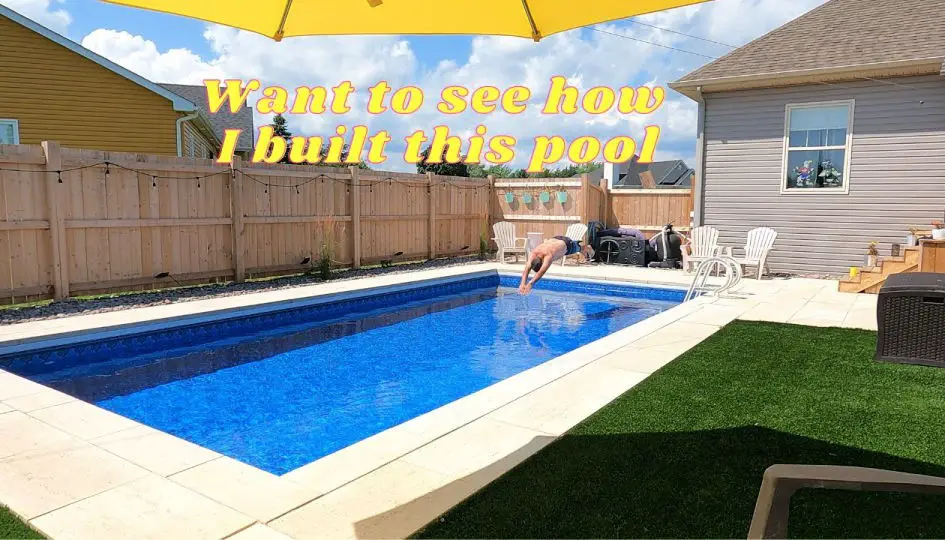
Immerse yourself in the world of DIY building by following a seasoned builder’s comprehensive YouTube tutorial on constructing an ICF (insulated concrete forms) pool. This instructional video breaks down the process of building robust pool walls using the innovative ICF method, starting with crucial foundation work and detailing every step from footing to liner installation. The creator shares cost-effective strategies that prioritize quality without sacrificing budget-friendliness, ensuring a durable and affordable pool. Learn how to precision-cut and align forms, prepare the site with compacted stone and sand, and master expert techniques for securing the pool liner. This tutorial is a treasure trove of knowledge for anyone looking to build a sturdy, in-ground pool, offering insight into every detail from initial excavation to finishing touches. By following this DIY journey, you’ll transform your backyard into an oasis of relaxation and entertainment.
Build Swimming Pool Under $ 5,000
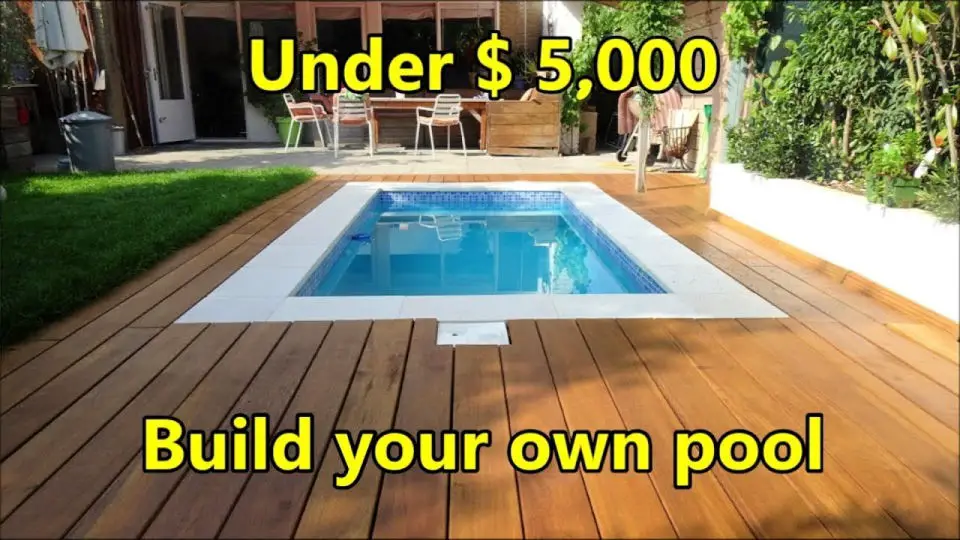
Immerse yourself in Nicole’s DIY pool construction journey, where she takes you by the hand through the process of building a personal swimming oasis in Amsterdam-Duivendrecht for under $5,000. Her comprehensive series of 13 step-by-step videos provides an unparalleled level of detail, covering everything from material selection to final touches. You’ll gain valuable insights into cost-effective materials and tools, witness Nicole’s hands-on approach firsthand, and gain a deeper understanding of the intricacies involved in building a plunge pool. This inspiring guide is more than just a practical resource for those looking to add a refreshing touch to their backyard on a budget; it’s a testament to creativity, self-accumplishment, and the power of DIY ingenuity.
Make Your Own Swimming Pool
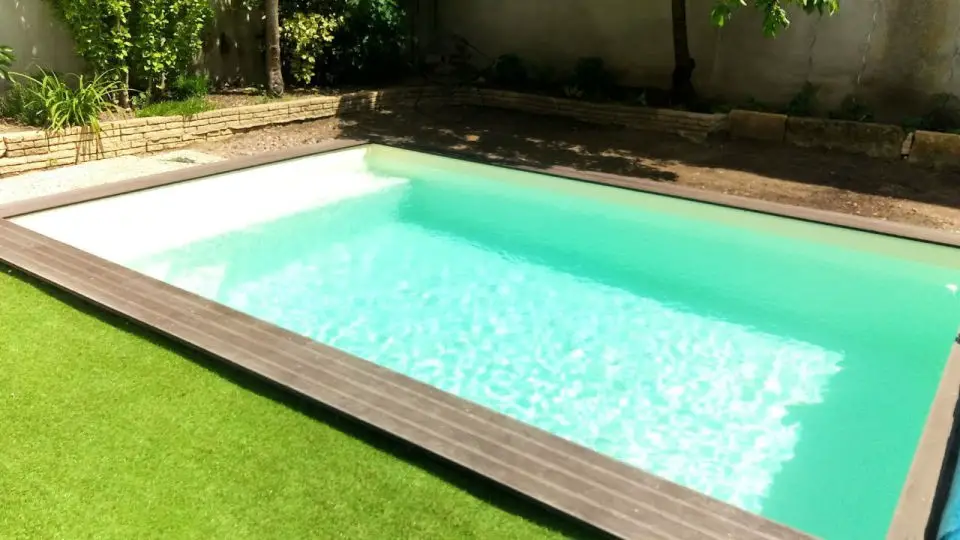
Constructing a swimming pool in your own backyard can be a game-changer, turning your outdoor space into a tranquil retreat. With a step-by-step guide, even the most ambitious DIY projects can become a reality. A YouTube tutorial by RetroArCab retrogaming offers an informative 26-minute video that takes viewers through every stage of building a 10×15 feet swimming pool, perfect for creating a serene atmosphere in your home’s interior courtyard. The video provides a comprehensive overview of the construction process, from laying concrete blocks to installing a professionally lined PVC liner. Whether you’re looking to create a peaceful escape or enhance your living space, this tutorial is an invaluable resource that offers valuable tips and techniques to ensure a sturdy and visually appealing outcome.
Easy & Cheap DIY 9 x 14 Swimming Pool
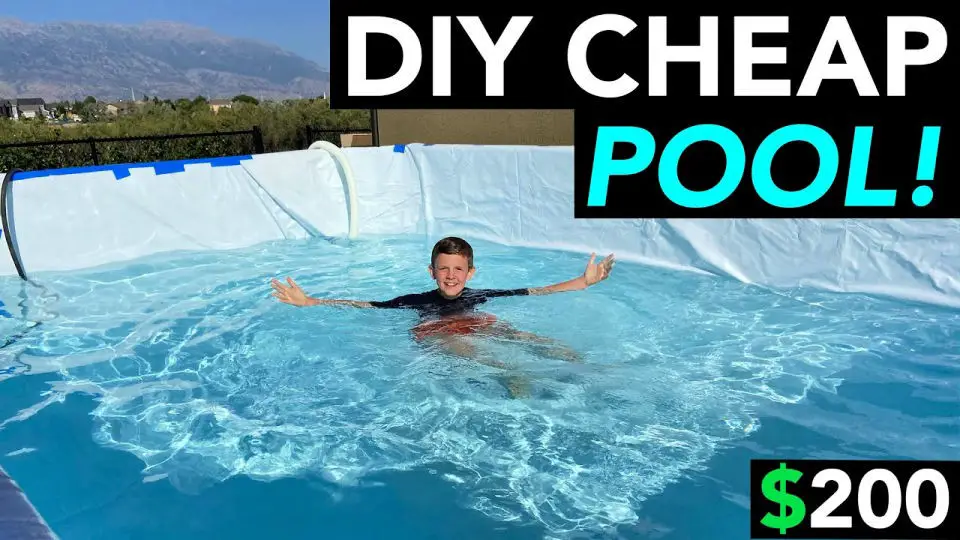
Indulge in the thrill of creating your own 9×14 DIY swimming pool, an affordable endeavor perfect for memorable family gatherings. This comprehensive guide demystifies the process of building a pool using primarily 2×4 and 2×6 lumber, with a significant portion of materials sourced for free from construction sites. The accompanying video illustrates the entire journey, from cutting and assembling lumber to lining the pool with foam padding and a sturdy tarp. For just $250, you can construct a robust, sizable pool, featuring homemade coping crafted using pool noodles for seamless edges. Additional enhancements like a makeshift pool cover made from treated lumber and a tarp prioritize safety and cleanliness. This project not only offers a refreshing retreat but also a fulfilling DIY experience, showcasing that with some creativity and basic tools, a summer haven is just a few steps away.
How to Construct Your Own Pool
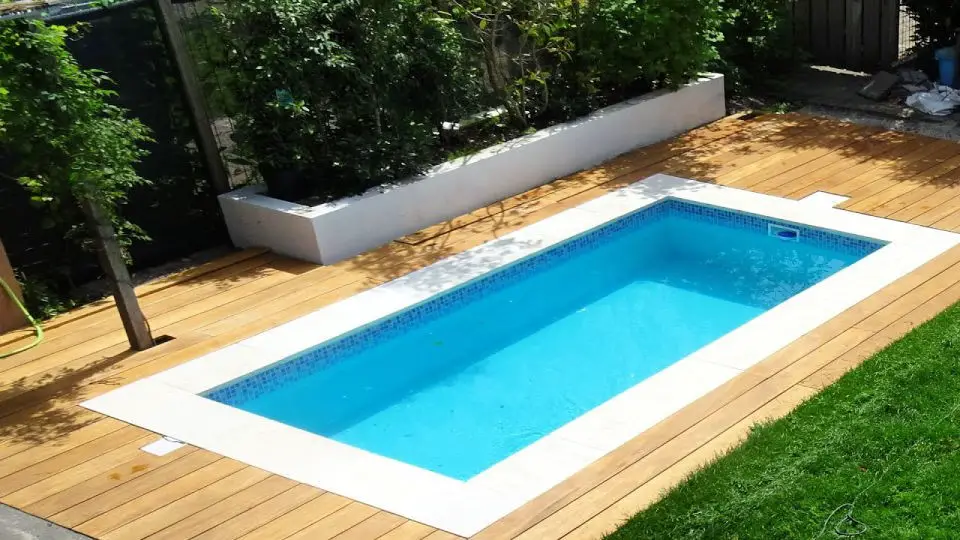
Create a stunning backyard retreat by building your own pool! This in-depth guide takes you through every stage of the process, from initial preparation to the final touches. Learn how to expertly prepare for the skimmer, manage drying walls during inclement weather, and construct a functional planter adjacent to your pool. The journey involves precise steps like gluing tiles, painting, laying and grouting tiles, and ensuring all finishing touches are immaculate before filling your pool with water. With this comprehensive guide, you’ll be empowered to say goodbye to temporary inflatable pools and hello to a durable, elegant pool complete with a deck and planter, transforming your outdoor space into a harmonious blend of function and beauty.
DIY Swimming Pool without Concrete
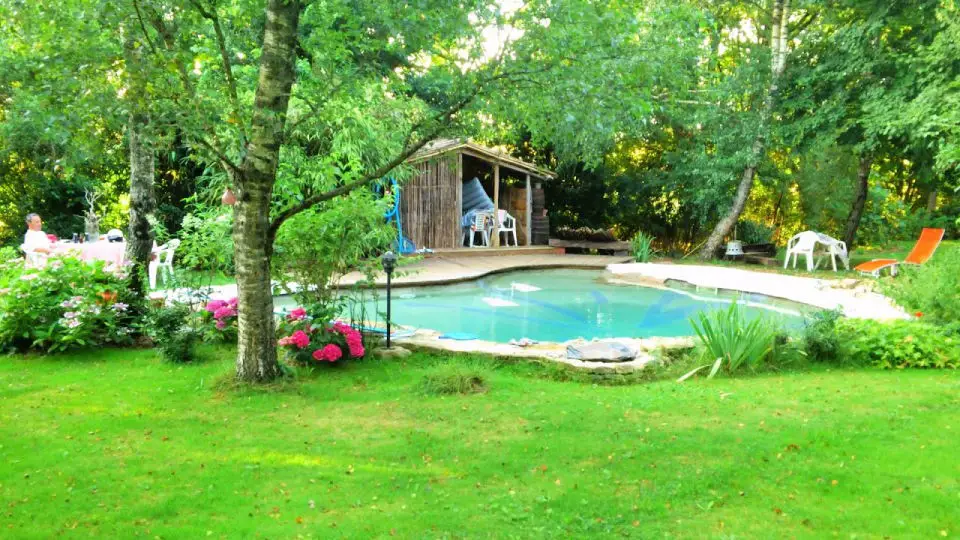
Revolutionize your swimming pool experience with a game-changing concept that scraps concrete altogether. Perfect for those seeking an affordable solution, this innovative approach has been thriving since its introduction in 2002. With unparalleled flexibility, you can craft pools of various shapes and designs to suit your unique vision. The initial investment of just €2500 (excluding surrounding areas) makes it an attractive option. But what’s truly remarkable is the durability of these pools, with many built using this method still standing strong today. To unlock the secrets behind this groundbreaking technique, dive into the creator’s book, ‘The Swimming Pool On The Ground’, and transform your backyard into a tranquil oasis without sacrificing your budget.
Natural Swimming Pool Made Out Of Foam
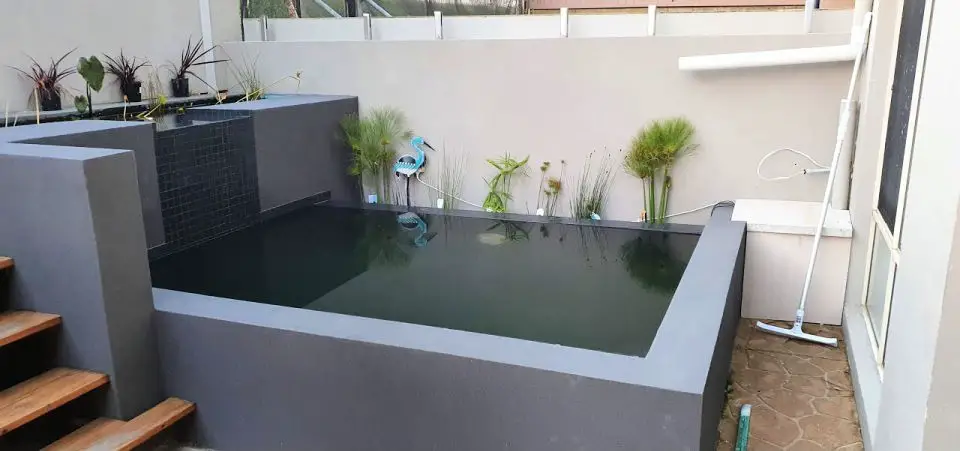
Transform your backyard into an inviting haven by building a one-of-a-kind natural swimming pool using m-grade foam for a sleek, contemporary aesthetic. This space-saving design features two regeneration zones, where scoria and lush greenery thrive, creating a harmonious blend of nature and artistry. The best part? This innovative project can be completed for under $8,000 AUD, making it an accessible indulgence. Traditional pool-building methods are replaced by easily transportable foam panels, which are then reinforced with core-filled concrete, rebar, and a durable double-meshed render for exceptional strength and durability. Escape to this self-built sanctuary, where the surrounding landscape seamlessly merges with the pool’s organic essence. As an added bonus, consider complementing your new pool with a matching foam concrete-look fire pit and bar, further enhancing your outdoor retreat.
How to Install an Inground Pool
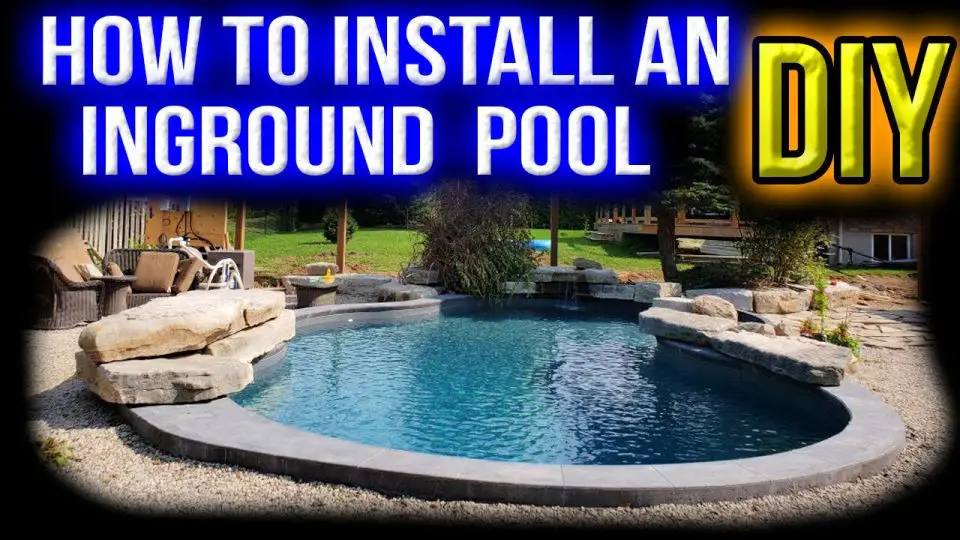
As you embark on the rewarding adventure of installing an inground pool in your Canadian backyard, discover the thrill of transforming your outdoor space into a tranquil oasis. This comprehensive DIY guide takes you through every step, from initial excavation to final touches, utilizing essential tools like tape measures, pins, and a skid steer. With precise measurements and safety standards at the forefront, you’ll relish the sense of accomplishment that comes with completing tasks like concrete pouring and wiring. With an approximate budget of $48,000, including pool kit, heater, pump, and labor, you’ll reap significant cost savings compared to professional installations. By putting your skills to work, you’ll create a stunning pool that’s not only a summer retreat but also a testament to your ingenuity and dedication.
Simple Pool Construction Idea

Transform your outdoor space into a luxurious retreat with a DIY backyard pool project that combines leisure with luxury. Envision crafting a bespoke pool featuring a Baja shelf for shallow lounging, built-in bar stools for social gatherings, a rejuvenating spa, and breathtaking waterfalls for an air of sophistication. To bring this vision to life, gather the necessary supplies, including construction materials, waterproofing sealants, and plumbing equipment. Start by carefully planning the layout, taking into account the size and depth of each section. Step-by-step, you’ll transform your backyard into a tranquil oasis that not only elevates your home’s aesthetic but also serves as a serene retreat for relaxation and entertainment, all within the comfort of your own property.
How to Construct a Pool

Transforming your backyard into an oasis is now within reach with our DIY pool construction guide. This comprehensive resource takes you by the hand, guiding you through every step of building a 7m x 3.5m pool, from excavation to the final touches. You’ll discover how to construct a sturdy cantilevered beam for boundary walls, manage tasks like steel and concrete work, rendering, and tiling, all while keeping costs in check with a total spend of around $30,000 AUD. What’s more, we’ll show you how to capture your progress with a GoPro for a captivating time-lapse of your DIY journey. With the potential to save up to 50% compared to professional quotes, this project is an unbeatable value. Get ready to dive into the world of DIY pool construction and turn your backyard into a haven.
Make a Swimming Pool Out Of Pallets
Transform your backyard into a refreshing oasis without breaking the bank! With Easy Pallet Ideas’ DIY tutorial on building a pallet swimming pool, you can turn reclaimed materials into a fun-filled retreat for family and friends this summer. By using simple items like pallets, plastic cloth, tape, and basic tools, you’ll be able to construct a budget-friendly pool that’s perfect for lounging in the sun or splashing around with loved ones. The step-by-step guide takes you through the process from laying down the waterproof base to decorating the edges for an inviting look. Whether you’re looking to create a unique conversation piece or simply enjoy a relaxing summer day, this project is sure to deliver endless hours of fun and relaxation.
How to Turn a Dumpster Into a Swimming Pool
Transform your outdoor space into a serene retreat without breaking the bank, thanks to Stefan Beese’s creative Dumpster pool project featured on HGTV. This budget-friendly alternative provides a stylish solution for those hesitant to invest in traditional pools. The transformation process is meticulously outlined, from sourcing a reliable Dumpster to installing a premium liner and adding a refined wooden frame. This innovative design not only caters to small lots but also offers the flexibility to relocate at will. Dive into the step-by-step guide and beat the heat this summer with your very own chic and functional Dumpster swimming pool.
DIY Swimming Pool 1000L IBC and Some Pallets
Building an above-ground plunge pool from an Intermediate Bulk Container (IBC) is an exciting DIY endeavor that can elevate your outdoor space. By repurposing a 1000-liter IBC and some pallets, you can create a unique water feature without breaking the bank. This practical project is perfect for those seeking to add a refreshing touch to their garden or backyard. With step-by-step guidance and helpful advice, you’ll gain insight into assembling, waterproofing, and maintaining your plunge pool, ensuring it remains a source of relaxation for years to come.
How to Installation Swimming Pool
With the right guidance, building an inground swimming pool can be a seamless process. At Compass Pools, we provide a comprehensive guide that’s accompanied by detailed construction drawings to help you successfully install your ceramic pool. Whether you’re opting for a flat or sloped bottom, our reliable foundation options – including concrete bases and gravel beds – will give you the confidence you need to get started. Once the pool is in place, our team expertly handles transportation and placement, followed by the installation of essential pool technology. The final stages involve backfilling, tiling, and roofing, ensuring a secure and visually appealing finish that’s ready for your enjoyment. Get ready to take the plunge – literally! Follow Compass Pools’ thorough instructions and discover the joy of having your very own swimming pool.
How to Build a Custom Swimming Pool
For DIY enthusiasts, building a custom swimming pool can be an empowering experience that yields unique and personalized results. A compelling example is showcased by Design You Trust, where individuals have successfully built pools that exceed standard models in terms of coolness and customization. This engaging narrative highlights the potential for homeowners to transform their backyards into one-of-a-kind oases by opting for a self-built pool. Not only does this approach allow you to tailor the design to your preferences, but it also fosters a sense of pride and accomplishment. For those intrigued by innovative home improvements, this story illustrates the creativity and satisfaction that can arise from DIY endeavors.
DIY Dream Swimming Pool From Scratch
Building a dream swimming pool from scratch can be both exhilarating and intimidating. To demystify the process, we’ll share a real-life example of a homeowner who successfully transformed his backyard into an entertainment haven, complete with a breathtaking pool, rock waterfall, splash pool, and braai area. This step-by-step guide offers valuable insights on planning, design, excavation, and filling, as well as practical advice on collaborating with professionals, navigating municipal regulations, and ensuring your pool’s structural integrity and aesthetic appeal. As an inspirational and instructive resource, this guide is perfect for individuals seeking to elevate their outdoor living space.
DIY Natural Swimming Pool
With unwavering determination, Awesome Inventions’ novice IT consultant turned his ordinary backyard into an extraordinary swimming pond. The journey unfolded with simple outlines, progressed through excavation, lining, and ultimately culminated in a breathtakingly lit and decked-out aquatic haven. This remarkable tale serves as a testament to the transformative power of ambition, hard work, and family collaboration, demonstrating that anyone can bring their innovative ideas to life without requiring extensive construction expertise. It’s a powerful reminder that with creativity and perseverance, you too can create your own backyard oasis, adding a touch of wonder and excitement to your home.
How to Make Swimming Pool – Inexpensive Project
Transforming your backyard into a serene retreat is now more feasible than ever with the innovative concept of building an outdoor swimming pool using pallets. This eco-friendly alternative to traditional pools has gained immense popularity among DIY enthusiasts, who can utilize this clever and cost-effective solution to create a unique aquatic oasis. The process involves stacking pallets to form the pool’s walls, securing them with durable materials, lining it with a waterproof tarp, and setting up a simple filtration system. This repurposing of materials not only reduces waste but also offers endless customization options to fit any space. As you dive into this sustainable swimming solution, you’ll not only create memories with your family and friends but also add a touch of rustic charm to your outdoor living area.
Gorgeous DIY Concrete Swimming Pool
While building your own swimming pool may seem like a daunting task, it’s actually within reach with the right guidance. One excellent resource is Instructables’ comprehensive guide to creating a 13x22x5 DIY concrete swimming pool, which can be built for approximately $7,000—a significant savings compared to commercial bids. For those eager to tackle a substantial hands-on project, this guide provides clear instructions on designing a robust structure that can withstand the pressures of water and earth, as well as plumbing intricacies. Tips include using lintel blocks for added strength and a waterproofing strategy involving surface bonding cement, making this an invaluable resource for anyone looking to create their own personal oasis.
DIY Swimming Pool From Bales Of Hay
Create a budget-friendly haven in your backyard without sacrificing style or functionality by building a homemade swimming pool using everyday materials. By repurposing bales of hay, plastic sheets, and rope, you can craft a refreshing retreat that’s perfect for beating the heat this summer. With minimal effort and investment, you’ll be able to assemble a fully functional pool in no time. Simply secure your plastic sheet over a square perimeter of hay bales, add some water, and get ready to soak up the sun in your own private oasis.
Conclusion:
Ultimately, crafting a DIY swimming pool is a fulfilling endeavor that brings value and joy to your home. The journey begins with designing and planning, followed by gathering materials, excavation, and finally, adding the finishing touches. Our comprehensive guide of 25 homemade DIY swimming pool plans takes you through each stage of the process with meticulous detail.To ensure a safe and stunning swimming pool that becomes a staple for years to come, it’s essential to approach the project with diligence in planning, attention to detail, and patience during construction. With this knowledge at your disposal, why not take the plunge and embark on your own DIY swimming pool adventure?

